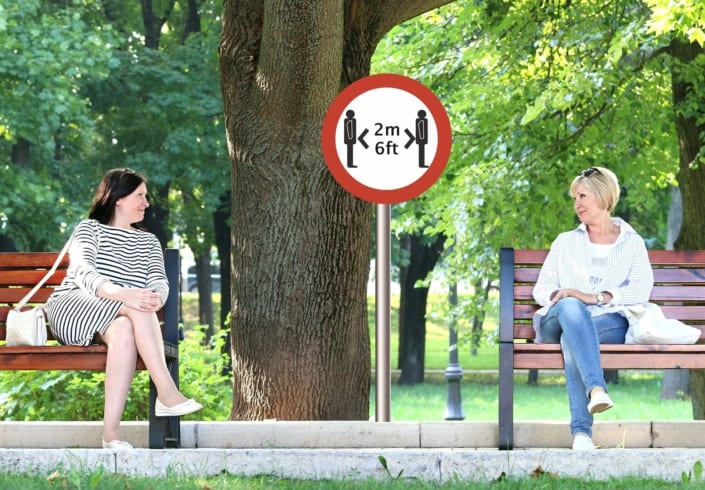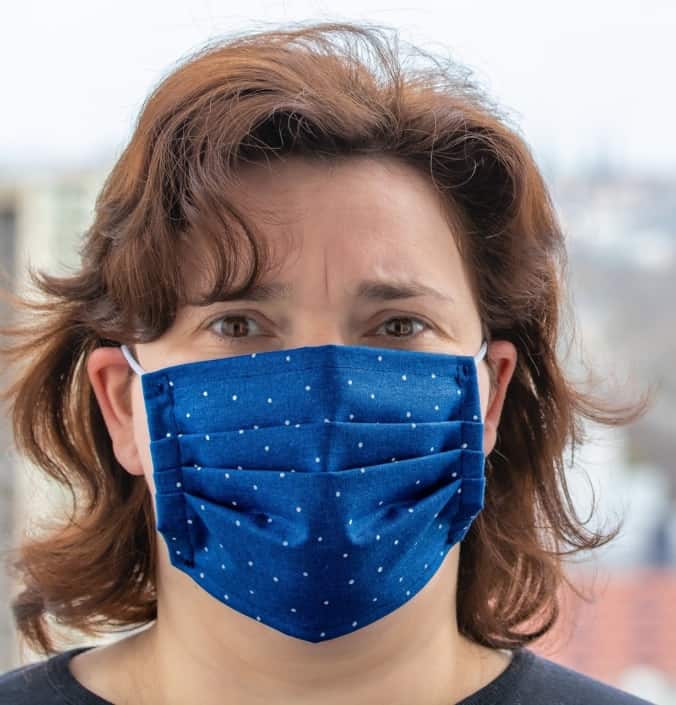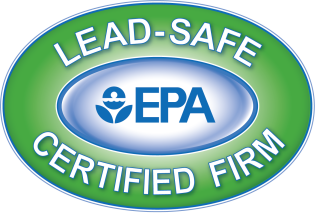Face masks have become a hot item lately. Healthcare workers have been unable to obtain the PPE (personal protective equipment) they need. People with allergies who need dust masks can’t find them. Now, the CDC is encouraging everyone to wear masks. What can you do? How can we solve this problem?
In this article, we show you the reasons for wearing masks for allergies and COVID-19, give you an update on why masks are scarce, and show you how you can make your own mask with the best materials backed by science!
MASKS FOR ALLERGIES
If you suffer from pollen or grass allergies, you may hate the return of spring and grass cutting season! Why should you wear a mask to cut grass? Think about all the things that could be on or in your lawn: insects, dog or cat feces, leaves, fungi, pollen, etc. Now think about mowing: a metal blade turns around like a fan and cuts the grass, but it also kicks all those things into the air! Yuck! Achoo! A mask sounds like a great idea now!
Our original post ‘The Best Mask for Grass Cutting’ gave four different options for excellent masks.3 All four masks prevent pollen and other particles from entering your nose. Unfortunately, all of them are currently sold out on Amazon (April 2020).3 We wanted you to know that you can make your own mask, and still significantly reduce the amount of pollen you breathe in.
To learn more natural allergy relief go to our post Natural Relief For Allergy Symptoms. For more information about asthma, see our post Asthma and Mold.
MASKS FOR COVID-19
Masks have become more than a way to prevent sneezing in the last few weeks. Recently, the CDC updated their recommendations about face masks for the general public.1 They are now recommending that everyone who is out in public wear a cloth face covering, and continue to keep a 6 ft distance between yourself and others.

Due to the coronavirus pandemic, masks are in short supply all over the US. Those of us who are practicing social distancing and staying at home don’t need the high level of protection that medical workers do.12 However, we still need masks! Amazon still has industrial dust masks and fabric masks for sale, however, most have very long wait times to arrive, most between beginning to the end of May and some as late as June.
Read all the way to the end of this article to learn the best homemade mask materials backed by science, and how to DIY your own face mask.
Transmission
COVID-19 is mainly thought to spread from person-to-person contact when a person cough, sneezes, or talks.2 It is possible that the virus can also spread from infected items, such as surfaces that infected people have touched after touching their nose, mouth, or eyes, but this is unknown at this point.2 Frequent hand-washing and sanitizing is a must when out in public or returning home.2 The virus spreads very easily and can be spread by infected people with no symptoms.2
Prevention
The CDC is recommending wearing cloth face masks to protect as many people as possible from contracting the disease.1 A cloth face mask does more to help prevent you from infecting others than it does to prevent you from getting sick.2 However, not all masks are created equal. Full Respirator Masks and N-95 respirator masks are the best at preventing infection, however these are in very short supply. Healthcare workers, first responders, and those on the front lines of fighting the virus have a priority to receive these masks if they are available.1
Who should not wear masks?
“Cloth face coverings should not be placed on young children younger than 2 years of age, anyone who has trouble breathing, or is unconscious, incapacitated or otherwise unable to remove the cover without assistance.”1
For even more resources about COVID-19 see our post titled Staying Safe during COVID-19: Trustworthy, Reliable Resources.
ALTERNATIVE MASKS
Because of the shortage of respirators and N-95 masks, health care workers, janitorial staff, and others that must handle infected materials are having to use homemade or fabric masks. These masks are not as effective as the industrial masks, but are better than no mask. Homemade masks can also be used to protect yourself from the virus and from allergens such as pollen, dust, etc.

A company called SmartAir based in India, China, Mongolia, and the Philippines, has done a lot of research on reasonably priced, efficient, clean air technologies.4,7 According to SmartAir, surgical masks like N95 respirators are the best for both breathability and blocking viruses.4 However, they are currently in short supply and needed for healthcare workers. Homemade masks do stop virus particle transmission, but not as efficiently as the respirators.
In 2010, researchers studied the effect of homemade masks on a potential flu pandemic using population modeling.8 They found that “results suggest that the use of face masks at the population level can delay an influenza pandemic, decrease the infection attack rate, and may reduce transmission sufficiently to contain the pandemic.”8 So encouraging everyone to wear homemade masks during a pandemic could both slow the rate of infection, and delay a spike in infections.8
Our healthcare system is not prepared for this kind of spike in illness, there are just not enough hospital beds. This is why we are being asked to stay home, wear homemade masks when out in public, keep at least 6 feet apart, and limit our going out in public, so that our healthcare system, and the people that work in it can handle the number of COVID-19 cases.
MASK MATERIALS
There are some materials that are better than others at preventing very small particles (such as virus particles) from going through homemade masks.4,7 Researchers at Cambridge University tested many different materials to be used as homemade masks.4,7 Single layered 100% cotton t-shirt fabric blocked 50% of particles sized 0.02 microns.4,7 The particles they tested were smaller than the coronavirus which is approximately 0.1 micron.4,7 Single layered pillowcase fabric blocked 57% of the 0.02 micron sized particles.4,7 These two fabrics were concluded to be the best for homemade masks due to their ability to block at least 50% of the 0.02 micron sized particles, and for breathability.4,7 Doubling of the fabrics did not increase the ability of the fabric to stop the particles more than 1-2%.4,7
In a recent study, that has not yet been peer reviewed, scientists discovered that quilter’s cotton, or cotton fabric that has a tight weave, blocked particles as small as 0.3 microns.18 As a general rule of thumb, the less light you can see through the fabric when you hold it up to the light the better it will be at blocking virus particles.18
Breathability is very important in a mask.4 Have you ever worn a mask for a long period of time, more than an hour? Masks can make you feel uncomfortable and very hot if the weather is warm! Fabrics that are breathable are easier to wear, and will keep you comfortable longer than fabrics or fibers that are not. You are also less likely to touch the mask and try to adjust it constantly to let air in and out, thereby increasing the risk of both letting in and out virus particles.
Filter Materials
As an additional protective measure, you could add a filter material to your homemade face mask, but what kind of filter is best? The filter must be a material that is breathable. According to Business Insider, stretchy blue shop towels (available from your local automotive supply store) were the best material to block particles from entering the mask.6 Coffee filters are another option to add to your mask. Using the pattern in the video below, you could add a filter to your mask for added protection.14
Filters should be removed prior to washing fabric masks. No matter what filter you choose to add, be sure you are comfortable breathing through it before leaving home or cutting grass. If it’s not comfortable, you won’t wear it.
HOMEMADE MASKS – HOW TO DIY
The CDC has a great website with both a sewing and non-sewing pattern to make your own homemade masks.10 Use Cloth Face Coverings to Help Slow Spread | CDC
To watch a video on how to sew a mask from the CDC pattern with a pocket for a filter and an optional wire for the nose bridge go to: EASY: How to Sew a Face Mask .14
To see a video showing how to make a homemade face mask in just 45 seconds, by the US Surgeon General, click here.11
Remember the best materials for making homemade face masks for both breathability and blocking virus particles were 100% cotton t-shirt material, quilter’s cotton, and pillowcase (or sheets) fabric.

